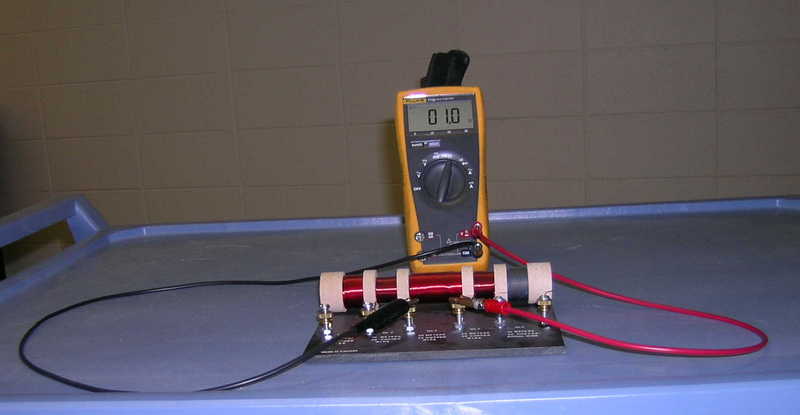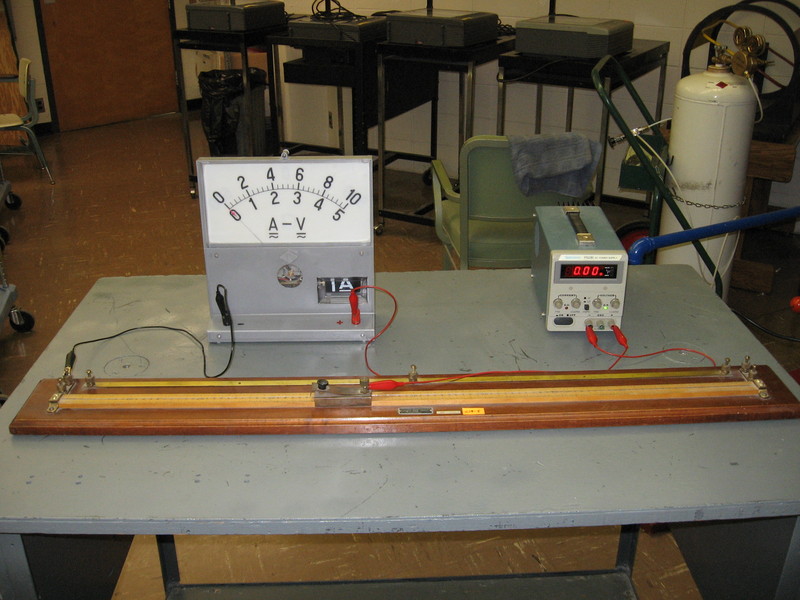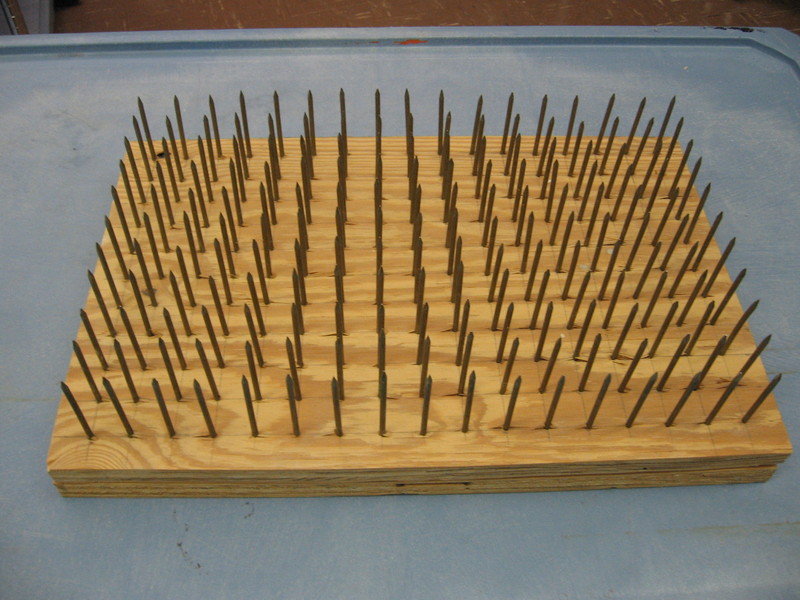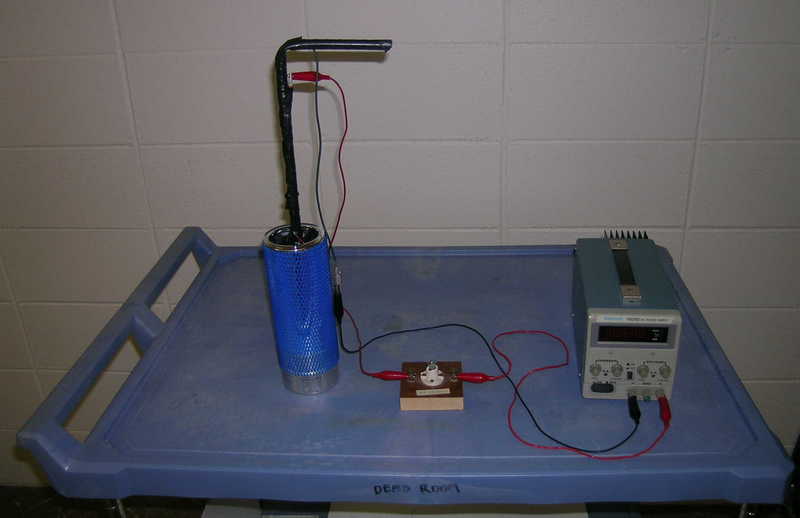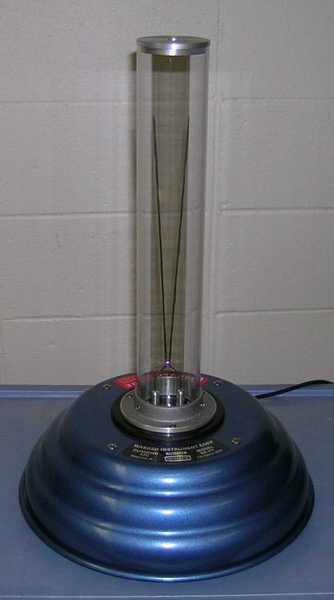RESISTANCE
5D10.10 RESISTANCE COILS5D10.20 SLIDE WIRE RESISTANCE
5D10.40 RESISTANCE MODEL
5D20.10 RESISTANCE AND TEMPERATURE
5D40.10 JACOB'S LADDER
|
5D10.10 Resistance Coils Coils can be used to show how resistance depends on length, diameter and material.
Setup Requirements: Minimal Equations: Resistance proportional to length of resistor and proportional to 1/area Safety Issues: None |
|
5D10.20 Slide Wire Resistor Slide wire connected to battery and current meter shows how resistance varies with length of wire. Setup Requirements: Assembled as needed. Set power supply to 0.5 v with open circuit. Use 1A scale on display meter. Equations: Resistance proportional to length of resistor. V = I(R + r) where R is wire resistance and r is meter resistance. To calculate R a voltmeter must be added to measure voltage between ends of wire segment. Safety Issues: None |
|
5D10.40 Resistance Model The small bed of nails can be used as model of electrical resistance. Use small ball to represent electron. Nails represent atoms. Setup Requirements: Off the Shelf Equations: None Safety Issues: Sharp Nails |
|
5D20.10 Resistance and Temperature Coil resistance is so high that 12v bulb will not glow even with power supply set to 18v. Cool coil with liquid nitrogen until resistance drops low enough for current to increase until light bulb starts to glow.
Setup Requirements: Assembled as needed. At least 2 working day advance notice needed or bring your own LN. Bulb shown in picture has been replaced by 12v bulb. Add LN until container with coil is filled to the top. This may take longer than expected because the top of the LN is hidden by the vapor. Allow several minutes for coil to cool. While waiting verify circuit and check power supply is set to ~ 18v. Equations: Resistance proportional to resistivity. Resistivity varies with temperature. Safety Issues: Liquid Nitrogen |
|
5D40.10 Jacob's Ladder An arc rises between rabbit ear electrodes attached to a high voltage transformer. About 30,000 V/cm needed to get current flowing in air gap. Glowing area heats air, reducing density,so it rises.
Setup Requirements: Off the shelf. If it is slow to start rising, move your hand up and down over opening to vary air pressure in tube. The arc will ignite tissue paper. Have a piece of metal or wood handy to cover the hole once burning starts to avoid fire alarm going off. Equations: None Safety Issues: High Voltage, Flames. Do not touch electrodes when power on. Extremely high voltage may kill you. Keep students away. Turn off and unplug before opening to add paper. |

